
Contact me Go to home page Return to main travel page
Japan
2019
*
Michael Kluckner
Contact me Go to home page Return to main travel page
Artwork & text © Michael Kluckner, 2019
| A long-awaited and oft-postponed trip for
me. Over many decades I had formed an image of Japanese culture,
from learning judo and karate in my teens to studying Japanese art
and dallying with Zen Buddhism in my 20s, to reading more recently
of its "demographic time bomb" as it resists immigration and its
birth rate declines, and even to imagining the Japanese-Canadian
world as reflected in my wartime graphic novel Toshiko.
Japan is so different from the diverse melting pot of (urban)
North America, as 98% of Japan is ethnically/racially Japanese,
yet nobody could deny how well the society works – efficient and
orderly despite its huge population, high-tech, prosperous, and no
visible poverty (at least everywhere we went). On the surface at
least it works very well, although the high suicide rate,
predominantly of young men, makes you question what's really going
on. Anyway, this blog is about travel artwork – aesthetics and tourism – rather than sociological speculation. I took my Moleskine sketchbook and pencil, as always, and took snapshots of unpaintable curiosities with the cellphone, but for "paintings" I did only sumi-e – brush-ink work using an ink stick and stone (which weighed a pound and threatened my rule about lightweight luggage) on washi, handmade Japanese paper that I bought in the Tokyu Hands "lifestyle" chain store, the only art-supply place I came across. I only did black and white, mimicking most Japanese painting before the Meiji period of the late 19th century.  From "Japanese Ink-Painting" by Ryukyu Saito (Tuttle, 1959): a much more elaborate set of gear than I travelled with. I wrote this out in this little essay on Japanese art and aesthetics, which opens as a pop-up on a computer and a separate screen on a tablet or phone. The pencil Moleskine is my travel diary and the sumi-e will end up in my next art show. I've put cellphone snapshots down at the bottom of the page, so keep scrolling... The Moleskine pages are reproduced at their original size, about 5 1/4 x 8 1/4 inches (13 x 20 cm), at least if you look at them on a "normal" screen. |

We stayed in Asakusa, an old Tokyo neighbourhood, but found adjoining Ueno to be more convenient both for the JR trains running into the centre of the city and to get to the museums in Ueno Park.
On our return to Tokyo at the end of the trip, we stayed at a funky upscale backpackers' hotel called Graphy Nezu on the west side of Ueno Park.
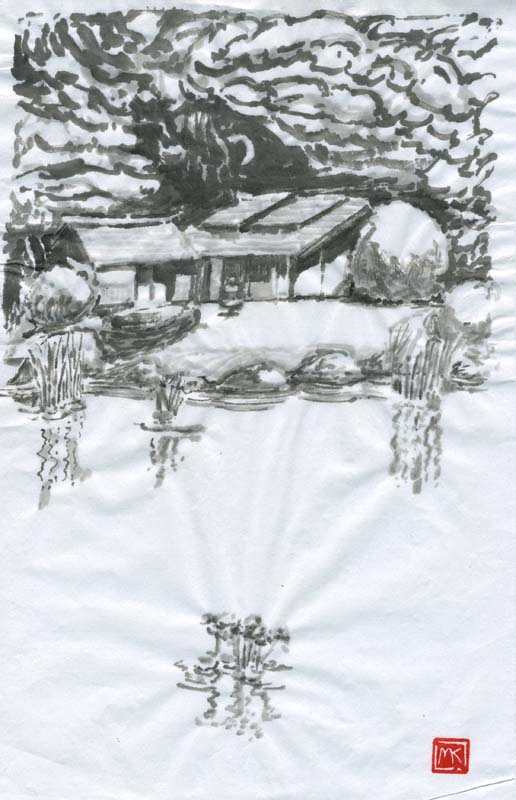
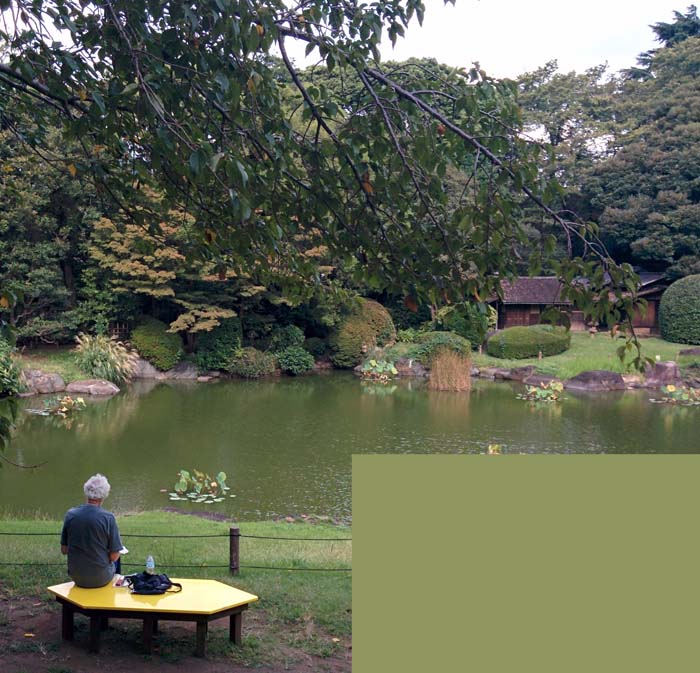
One of the few placid places to sit and paint was on the grounds of the Tokyo National Museum in Ueno Park.
The poor quality of the little daub above, done on rice paper that is sold in Canada as art paper, made me set out to find proper washi,
which I used for the rest of the trip.

Shinkansen are the famous bullet trains. The Imperial garden is a huge park that is an easy walk from Tokyo Station. We dumped our bags at the station on the day we left for Kyoto and spent the morning exploring.
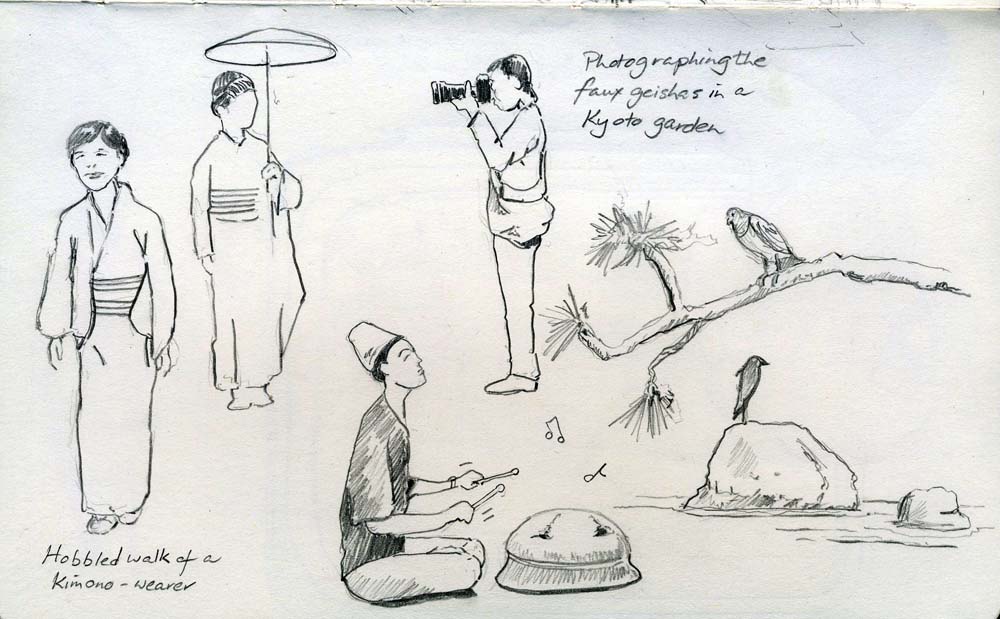
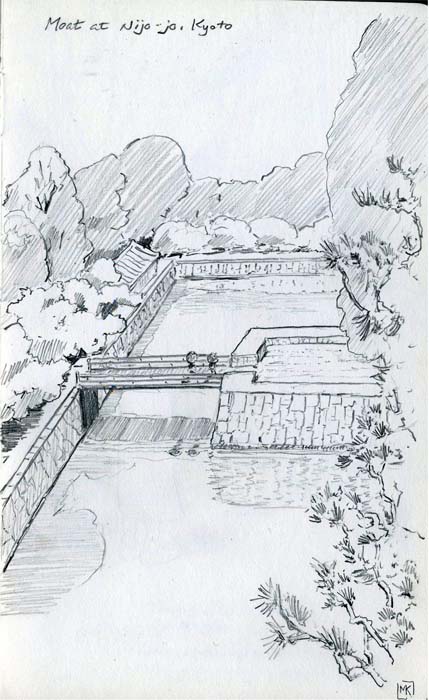
We rented an airbnb apartment in Kyoto near the Nishinotoin-Matsubara intersection and explored the city on foot and by bus using the excellent 600 yen day-pass.
Our neighbourhood was a mix of small apartments and traditional streets like the one below.
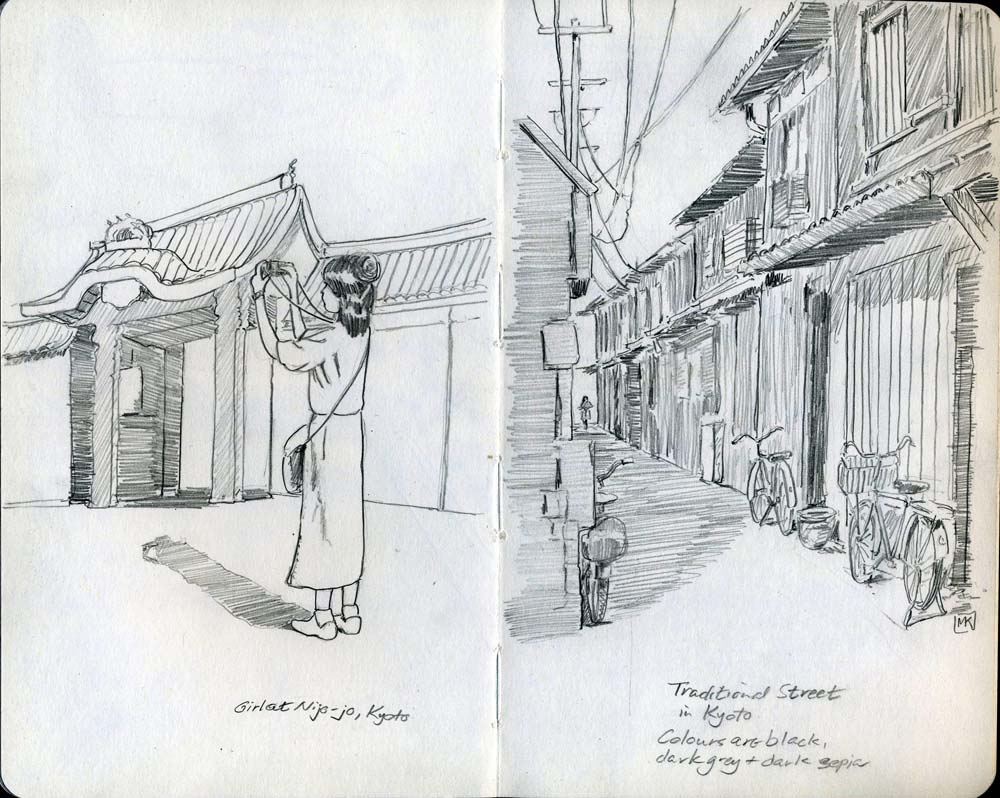
Many young Japanese people are quite tall – a tribute to the balanced nutrition their generation received compared with previous ones that survived mainly on whale meat, fish and rice.
The young women are slender and long-bodied with very finely formed arms and hands and long glossy-black hair. A typical outfit is a three-quarter- or long-sleeved cotton blouse, a long cotton skirt,
and bobby socks and sneakers, or at least flat-heeled shoes. They stride, swinging their legs from the hip, unless they're hobbled by a kimono and sandals.
The young men are also lean but less well-groomed – more like North Americans – except for the salarymen in their suits and ties.
Note the bicycles on stands in the streets, not chained to anything. There's a note about this below in the snapshots.
The Fushimi-Inari shrine with its torii gates, and the bamboo grove at Arashiyama, are crowded with tourists. Google them for a million photos.
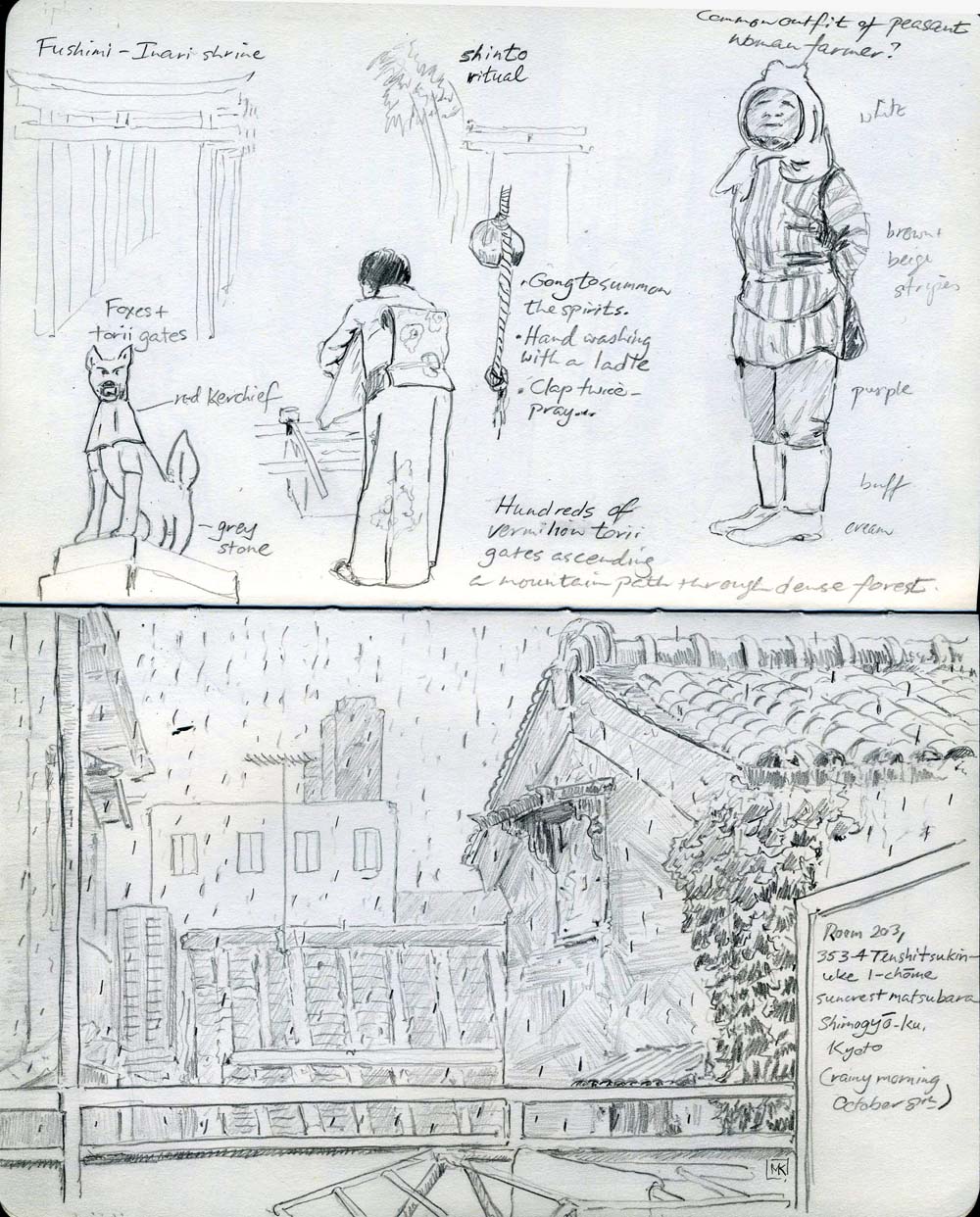
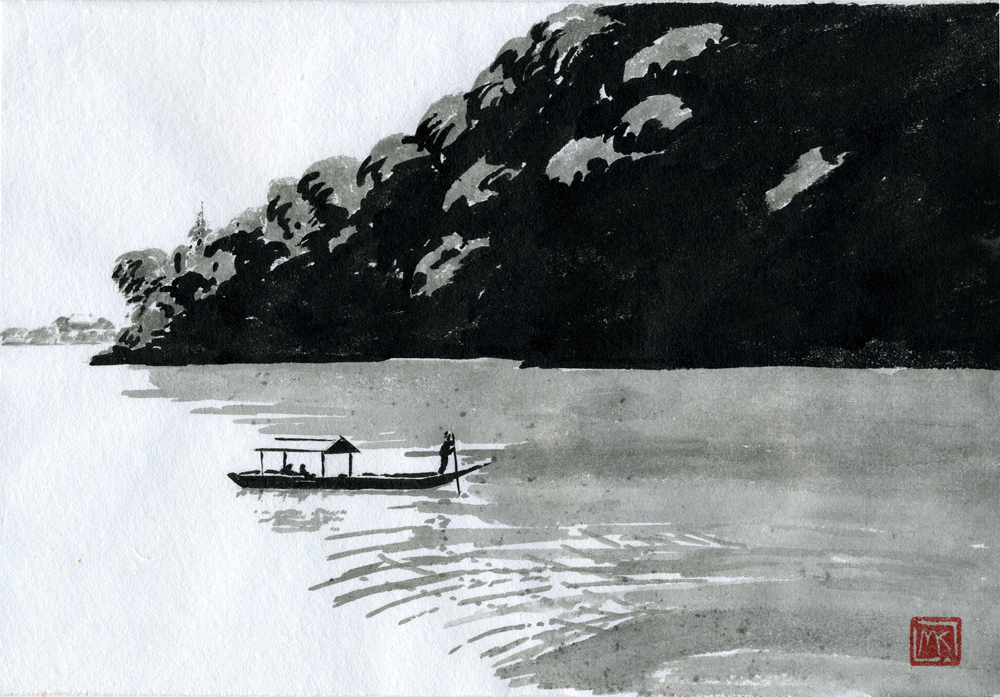
Sumi on washi (about 8 x 10 inches). The Katsura-gawa River at Arashiyama near Tokyo.

We spent a few days in Osaka with our friend Misako, including a trip to Kobe to hear the Chopin-specialist Yukio Yokoyama and a visit to the Japanese garden in the Expo '70 park.
I imagined the garden as a kind of stacked landscape that is the typical form of a traditional Chinese and Japanese painting...
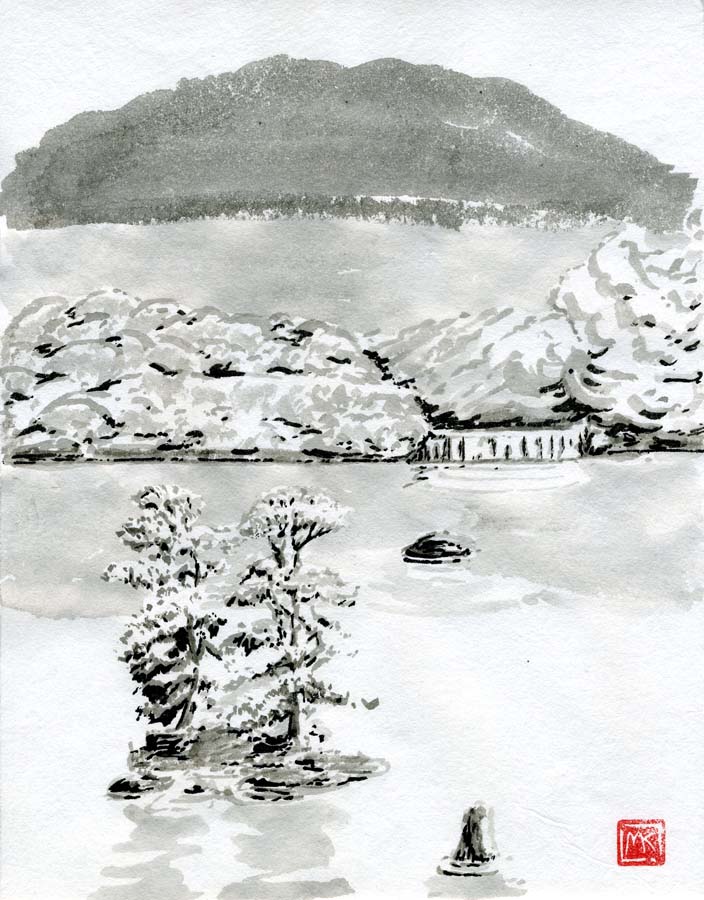
... containing the elements of both gardens and paintings: clipped and contorted pines, rough rocks artfully placed, and water.
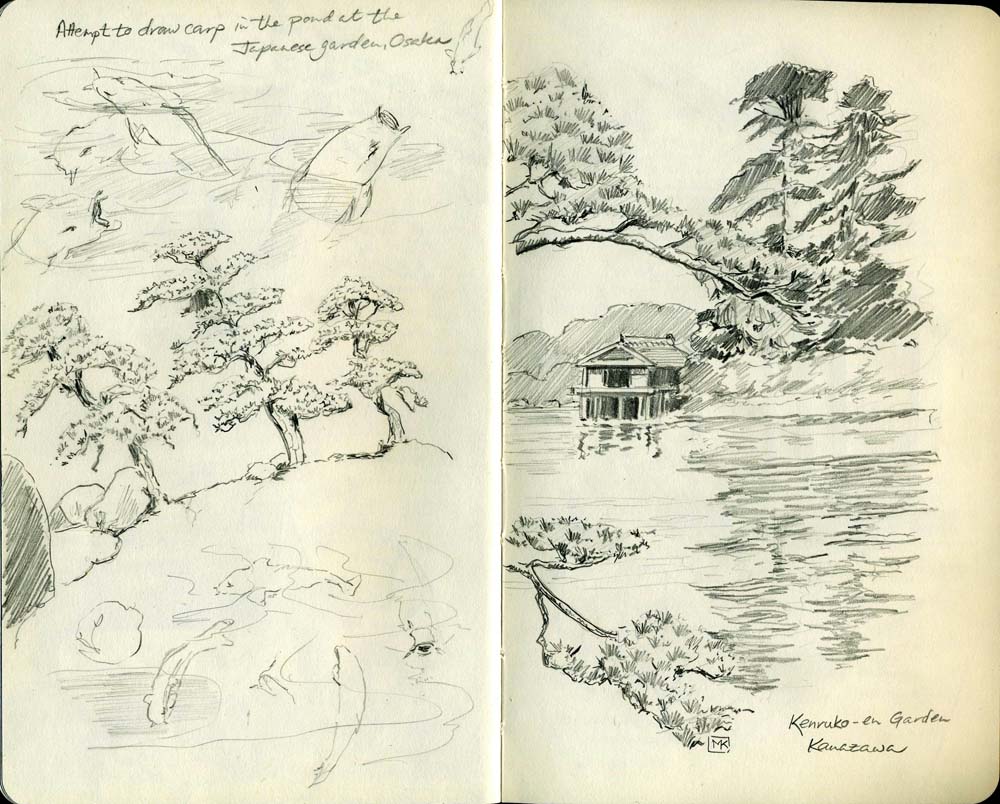
The best garden was Kenruko-en in Kanazawa, a masterful mix of the classic elements with a kind of "artificiality" – created views that emulate traditional paintings more than they do much of the landscape.
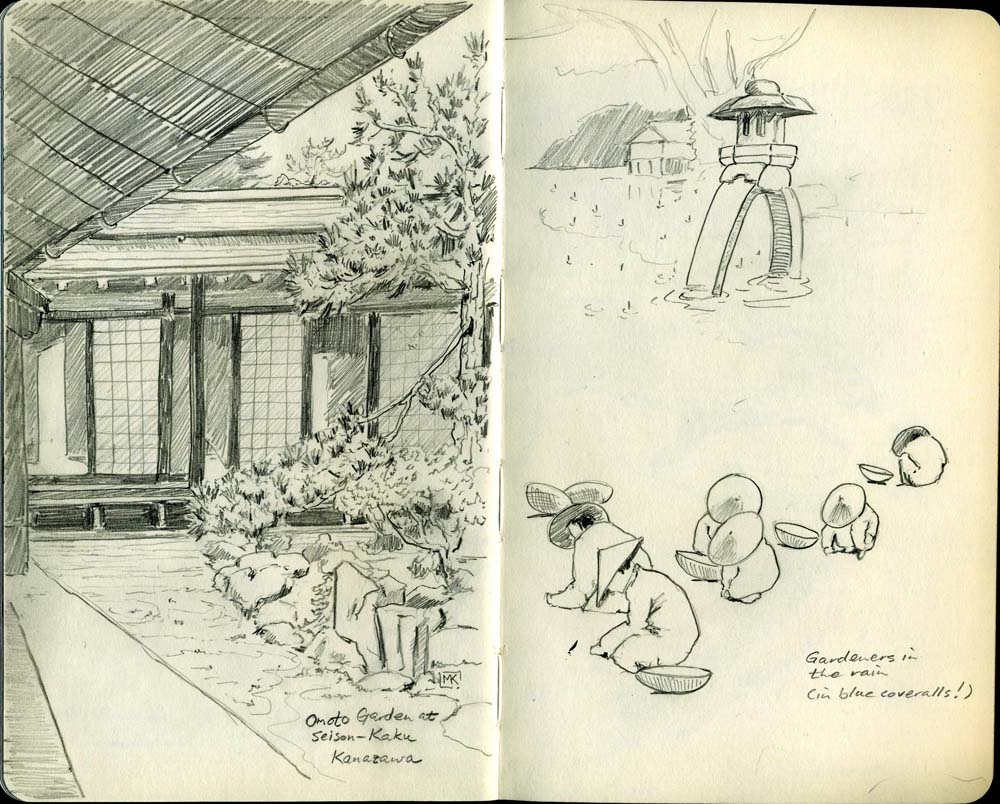
Seison-Kaku is a beautiful house museum in Kanazawa, with gardens tucked into its corners. The palette is all dark brown wood with the buff and white of tatami and paper screens.
(Below) Near the end of the trip, we rented a car in Kanazawa and drove north onto the Noto Peninsula.
Here at last was the kind of wild landscape of rugged rocks and gnarled trees that became the paintings and thence (as I understand it) classical Chinese and Japanese gardens.
The bay below at Togiushioroshi on the west side of the peninsula looking out onto the Sea of Japan had a small fishing port with a breakwater and a couple of sheds tucked into its lee.
In reality, the coastline has a very visible thread of coloured plastics – fishing nets, bottles and bags – washed up to the storm-surge mark.
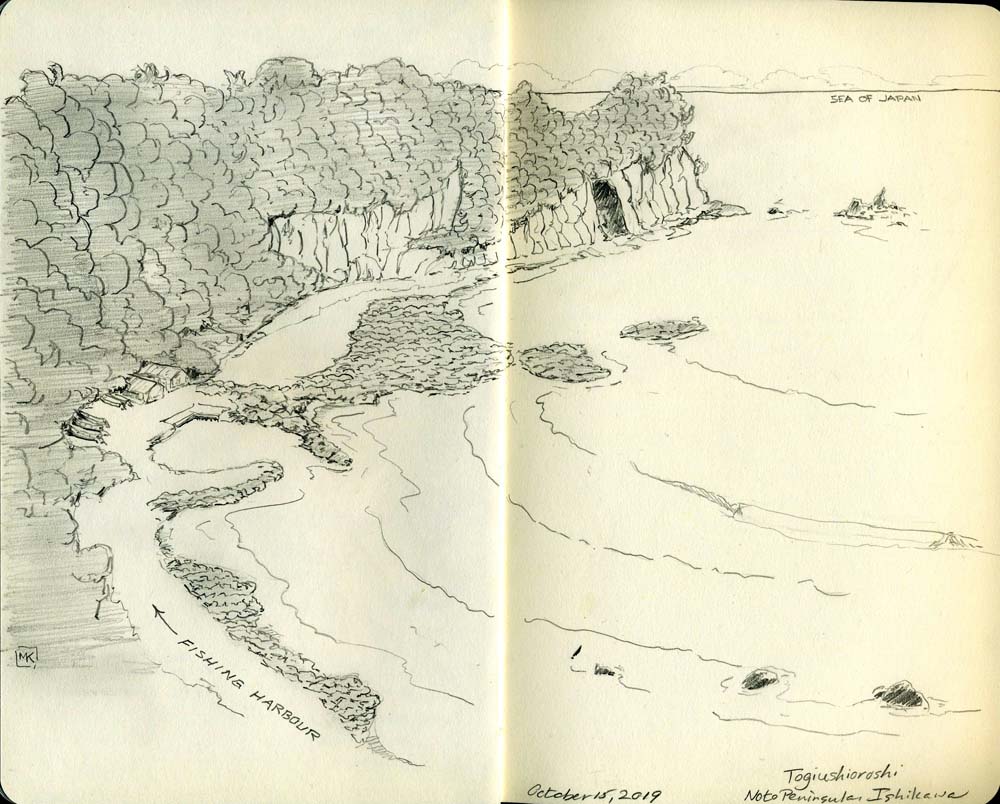
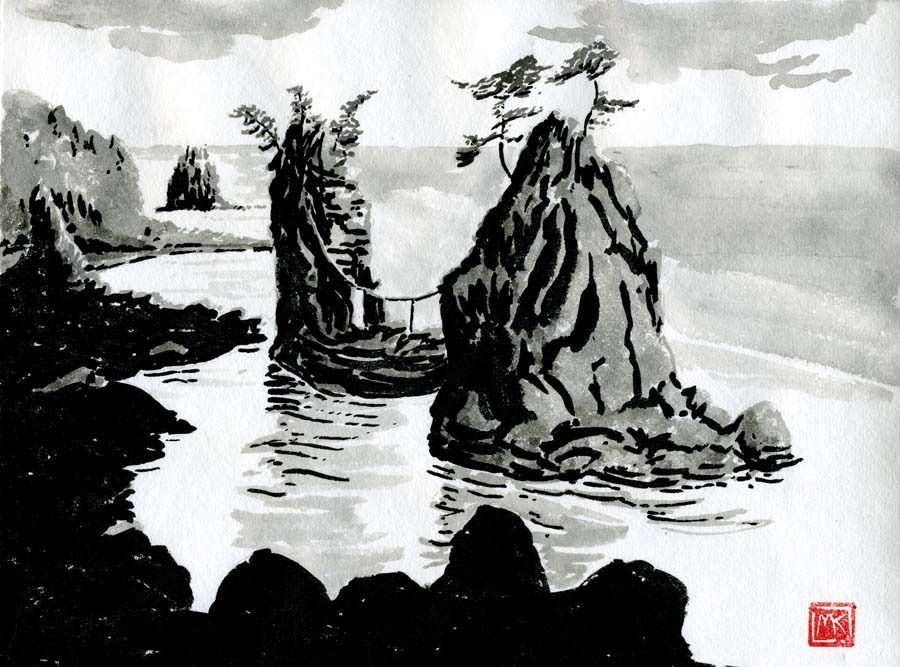
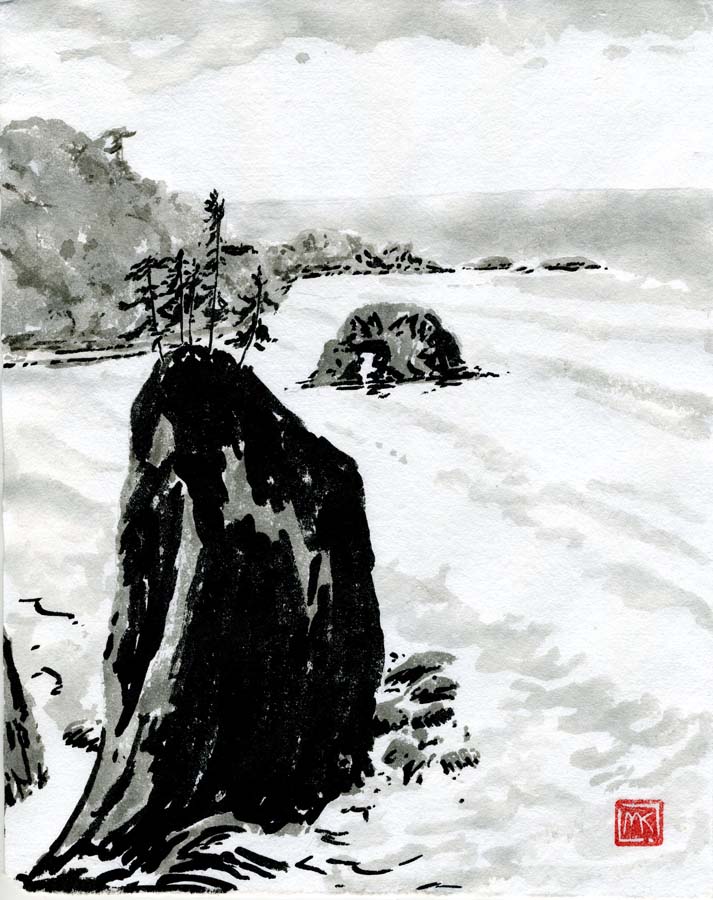
Two rock outcroppings at an area known as Toji. Both sumi on washi, about 10 by 8 inches.
*********
Snapshots!
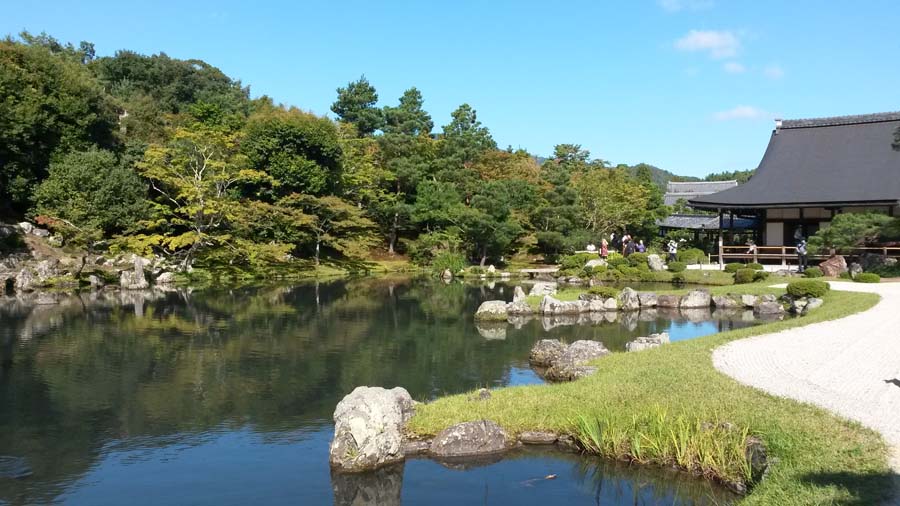
These are the colours for much of the year, here at the Tenrigyu Zen temple at Arashiyama.
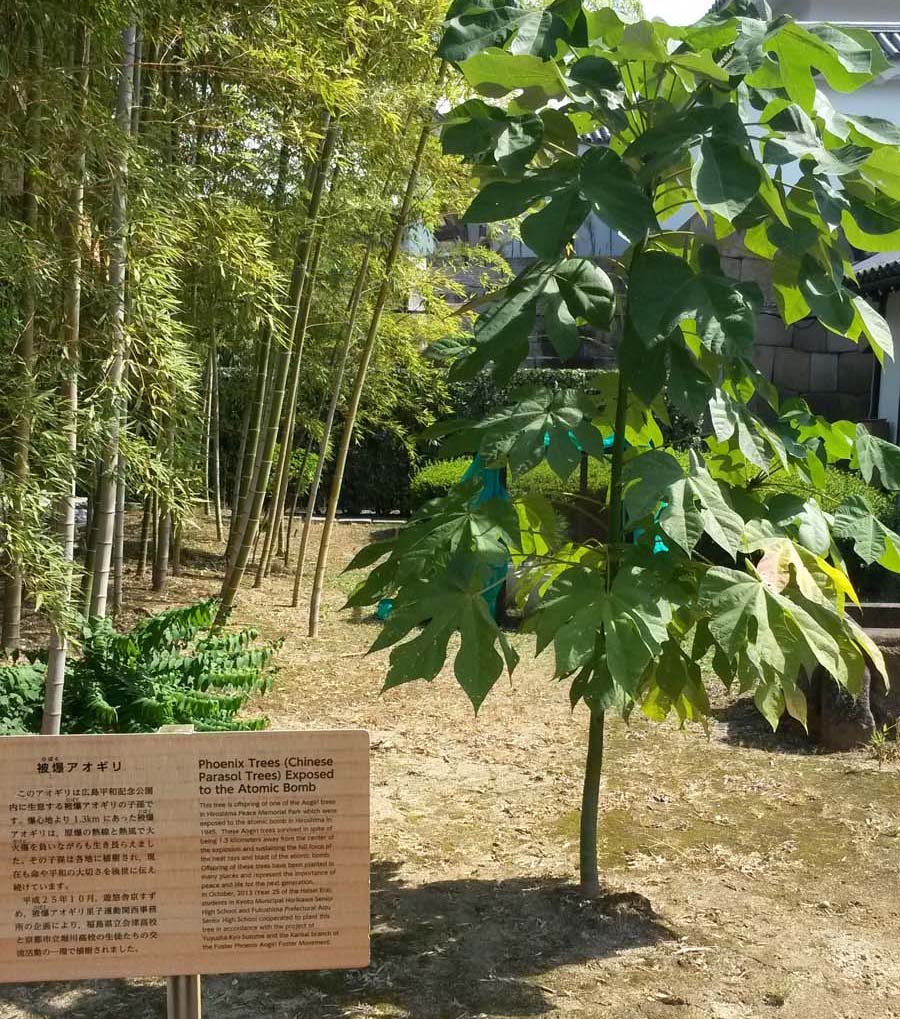
Memories of World War II are never far away for those who look. The sign says this tree was grown from seeds of a tree that survived the A-bomb blast in Hiroshima
even though it was little more than a kilometre from Ground Zero.
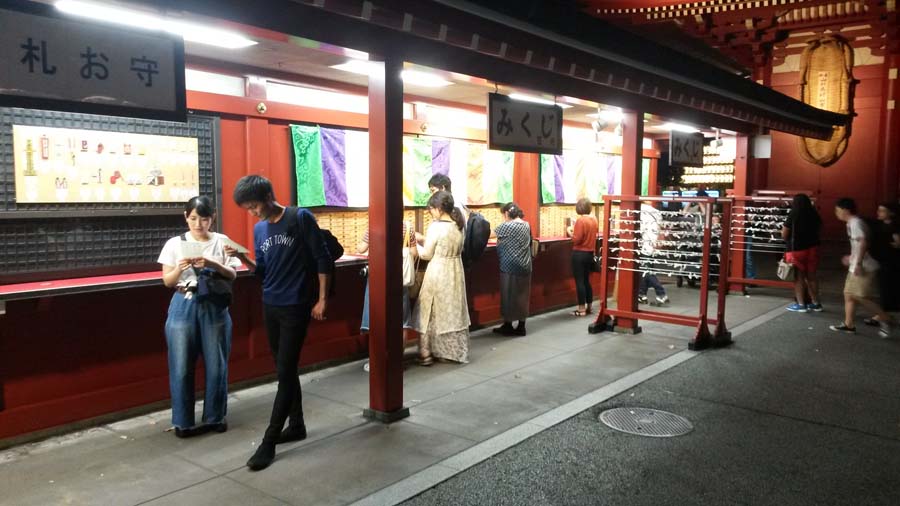
Shrine in Asakusa, Tokyo. Shinto believers make a donation, say a prayer, and shake a fortune out of a slim tube like a drinking straw; many tie their fortunes onto the racks.
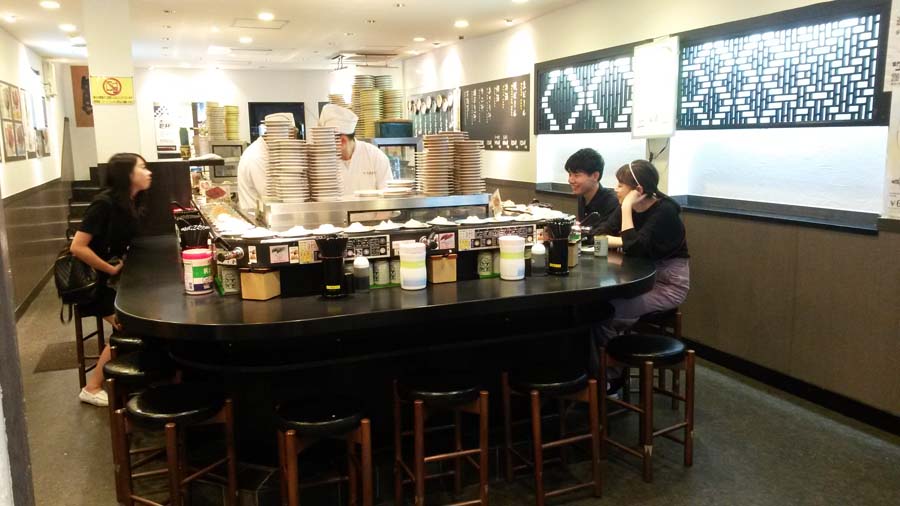
Conveyor-belt sushi.
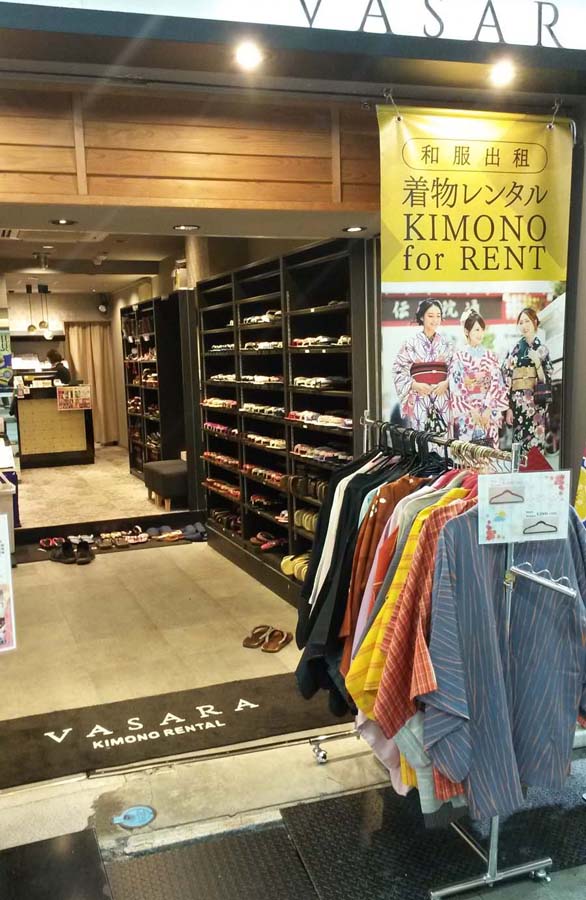
Weekend geishas and tourists rent kimonos and parade around decoratively for the day.
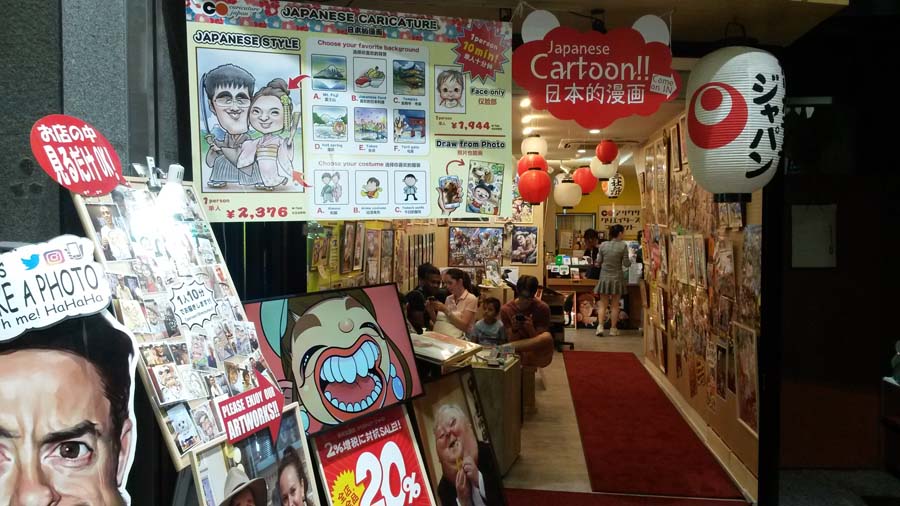
Manga ("whimsical pictures," a style mainly identified with comic books and anime cartoons) is everywhere, even on official signs such as roadwork barricades.
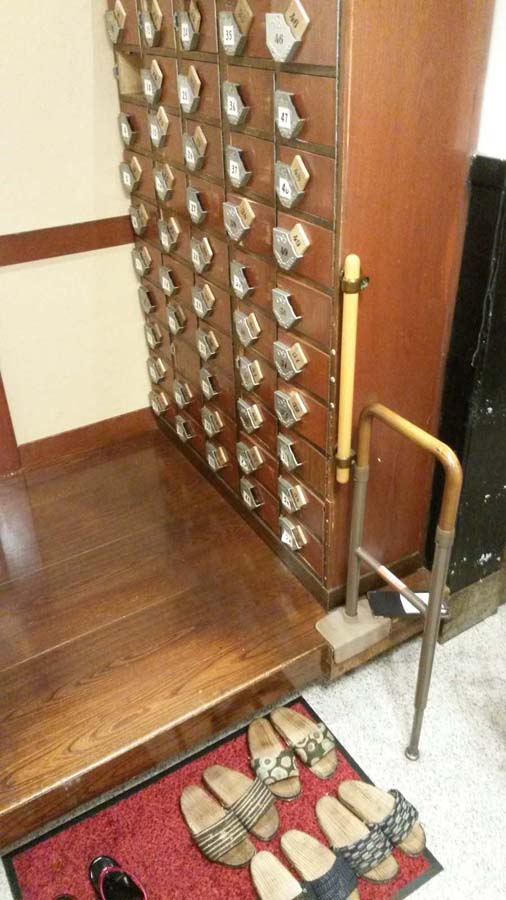
A shoe locker at the entrance to a restaurant with a wooden key for each cabinet.
The patron puts shoes in a cubicle and takes the key to the table. The sandals on the floor are optional.
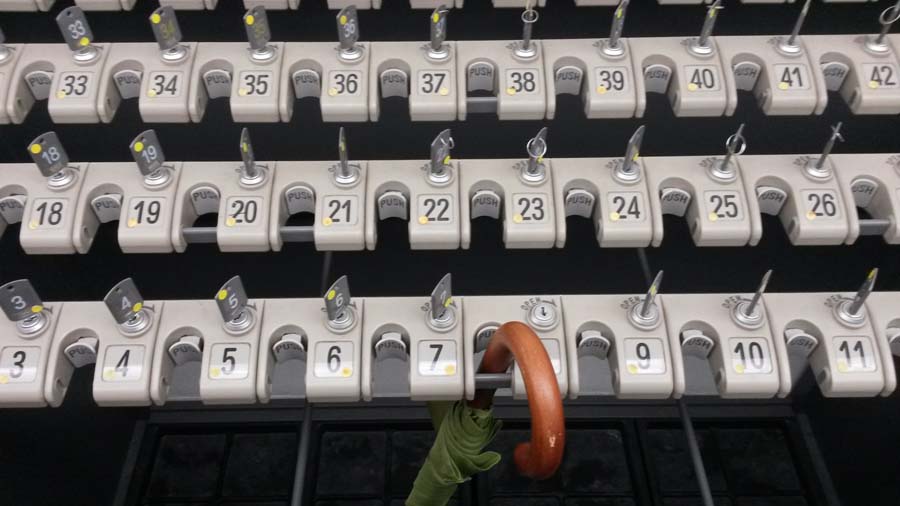
Umbrella locker. Very common.
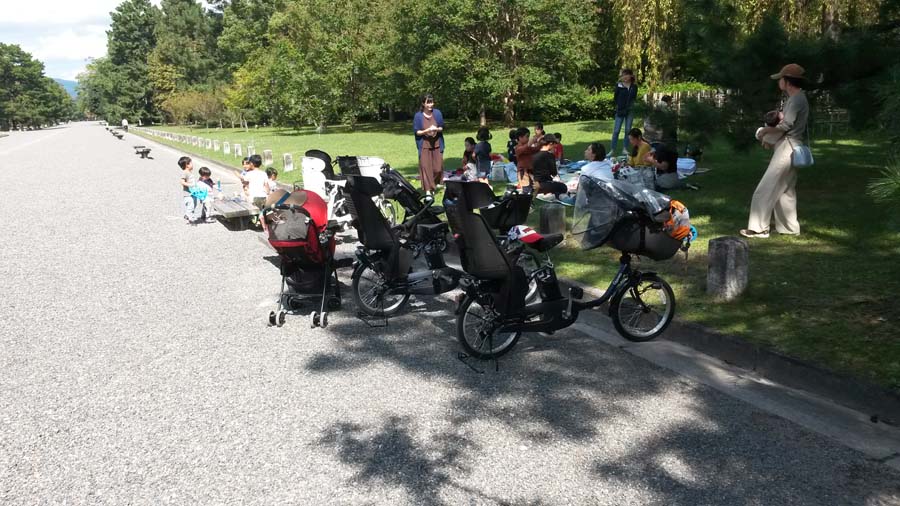
A picnic of moms and kids in the park of the Kyoto Imperial Palace. Are their salarymen working 100-hour weeks?
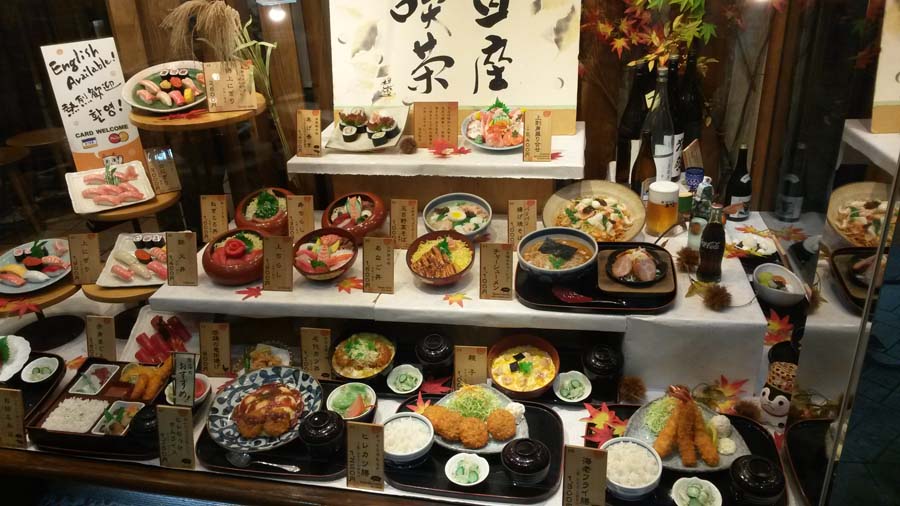
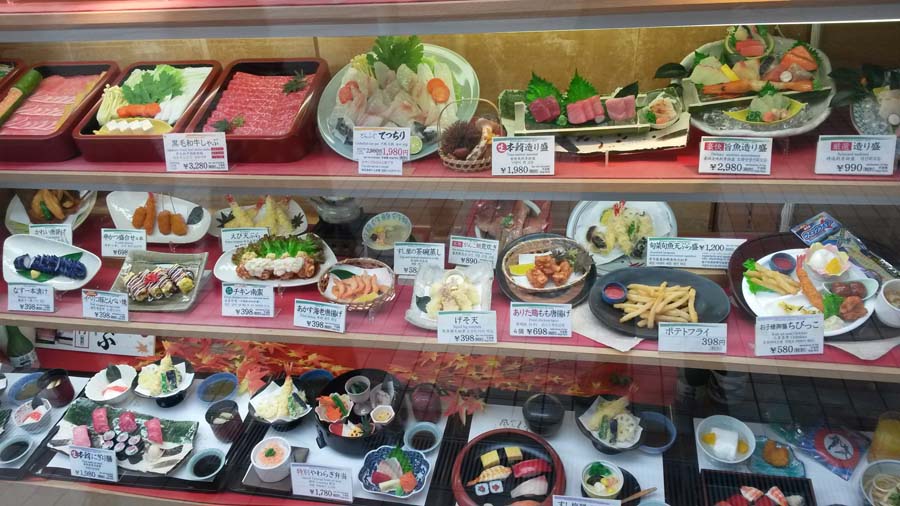
Plastic food, brilliantly made, in restaurant windows. It doesn't necessarily make ordering any easier if you can't read the Japanese.
The little fried bits might be pork or chicken or (rarely) fish.
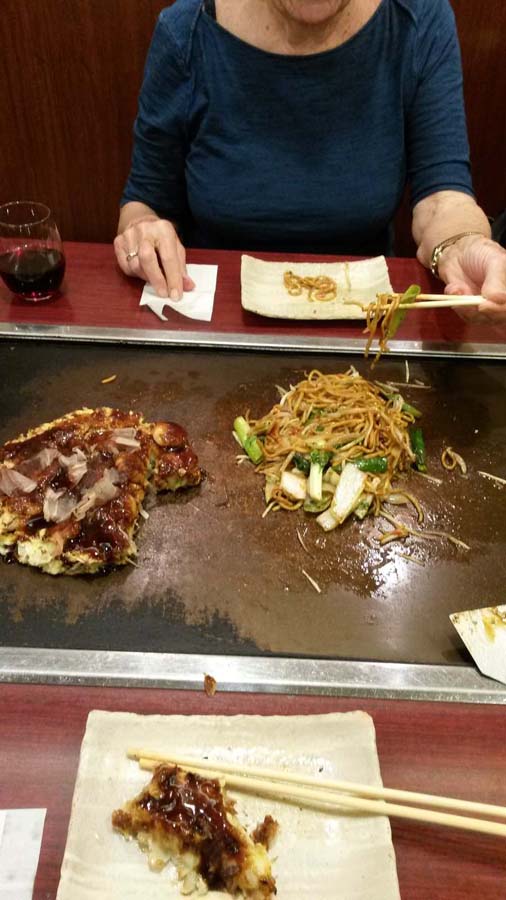
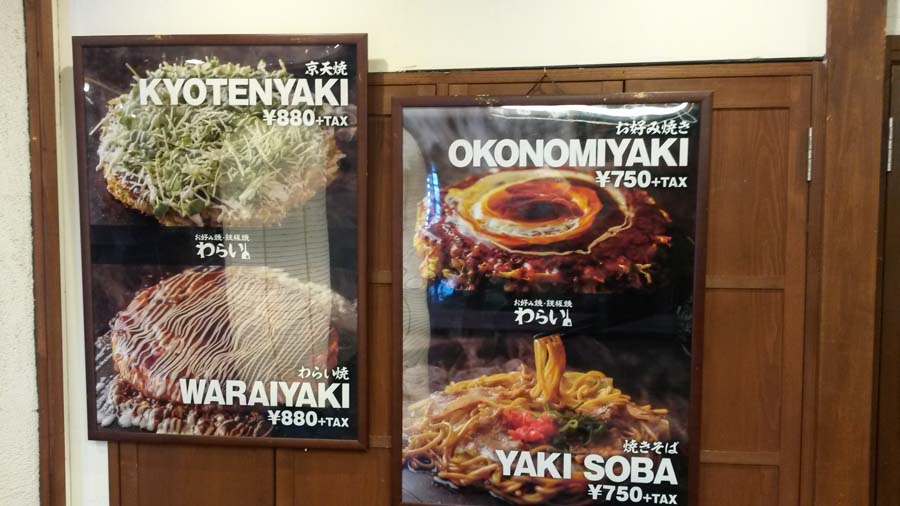
Favourite food, in a restaurant directly behind the Daimaru department store on Shijo-dori in Kyoto. The little grill in the centre of the table kept the food hot.
Okonomiyaki is a kind of pancake with cabbage and some kind of meat or shellfish filling; Yaki Soba is fried vegetables.
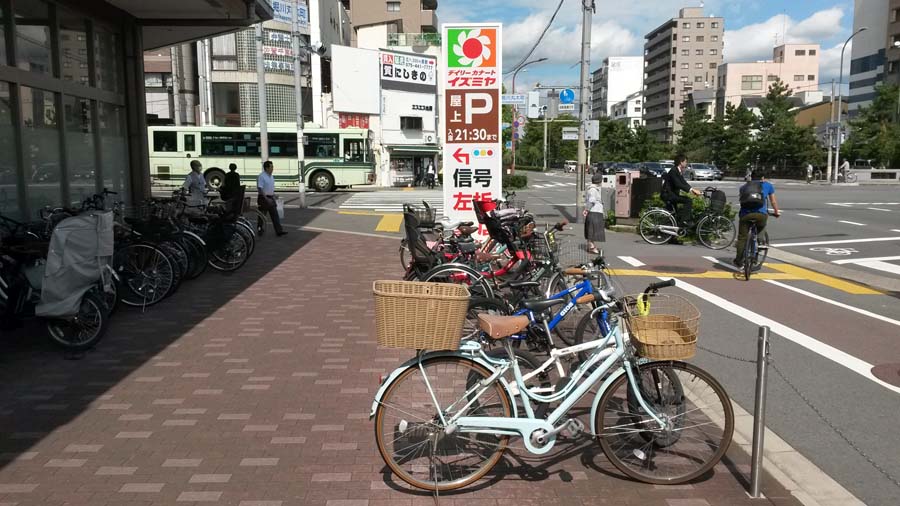
Bikes parked outside a supermarket in Kyoto. Like the ones I drew on the street, they have little wheel locks on the rear wheels but aren't chained to anything.
In Vancouver or elsewhere in North America, they would be stolen in no time. All you can surmise is that Japanese people don't steal bikes. Nice.
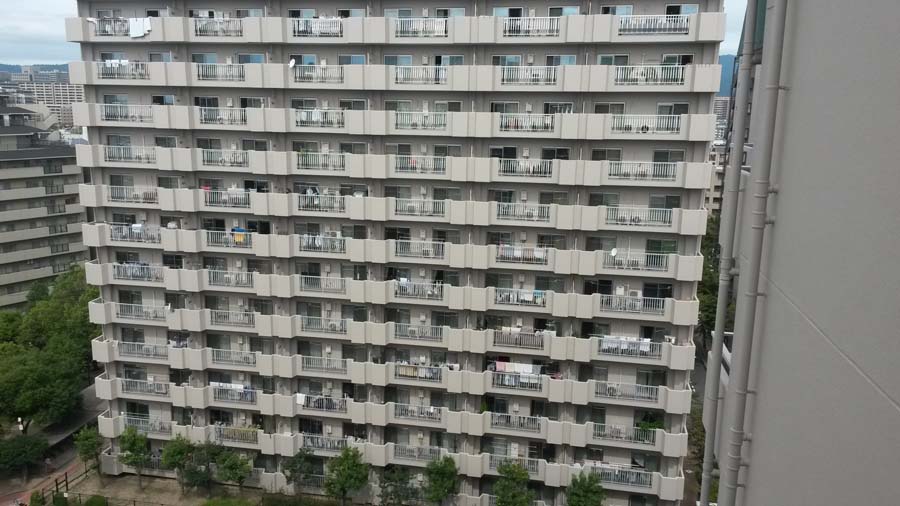
The view out one side of the Osaka apartment where we stayed. Although there are tens of thousands of detached houses, even in the big cities, many people live at these high densities.
135 million people fit into a country less than half the size of British Columbia (population 5 million).
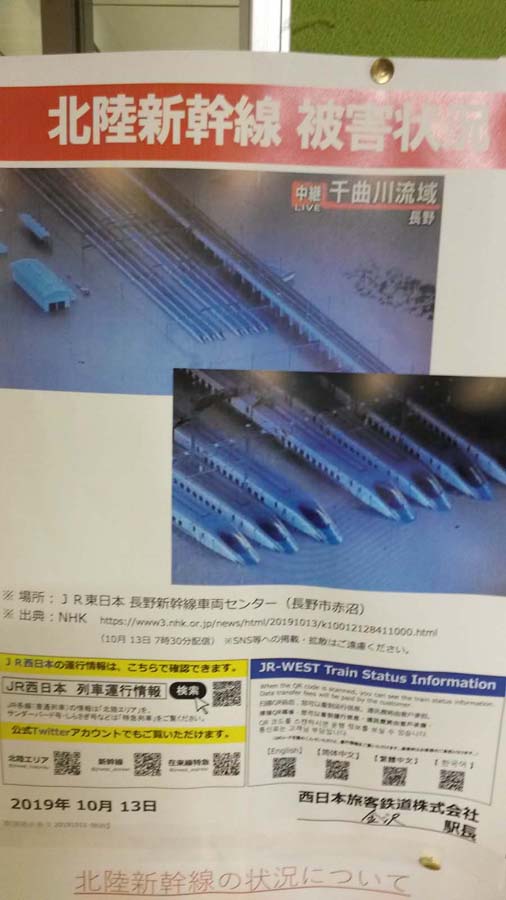
Sign in the Kanazawa railway station after the typhoon, explaining why the trains wouldn't run directly back to Tokyo via Nagano.
We had to return via Kyoto/Nagoya.
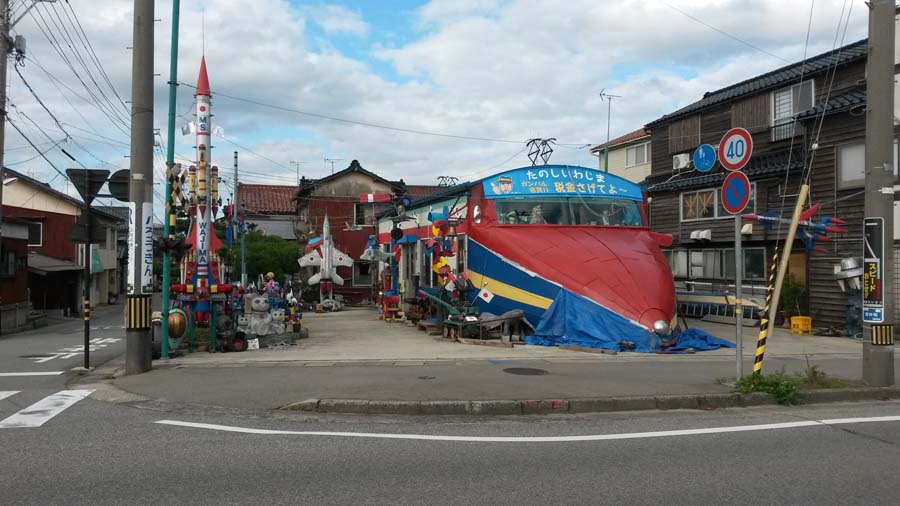
Shinkansen house at Wajima on the Noto Peninsula.
(Below) On the final day in Tokyo before taking the train to Narita, we stashed our luggage at the Tokyo Station and walked to the Modern Art Museum on the other side of the Imperial Park.
"Modern Art" means "since the Meiji Restoration of 1868" when Japanese artists took on western styles and media like oils and watercolours. It's a bit of a hodge-podge.
What caught my eye were the Kimura Shohachi book illustrations below. It's sort of my thing, but I thought they were very evocative of their time and place just before the war.
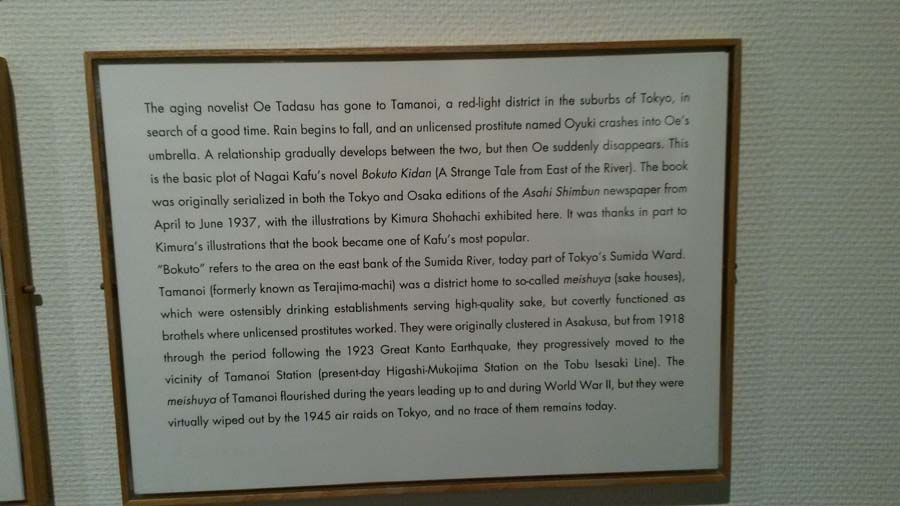
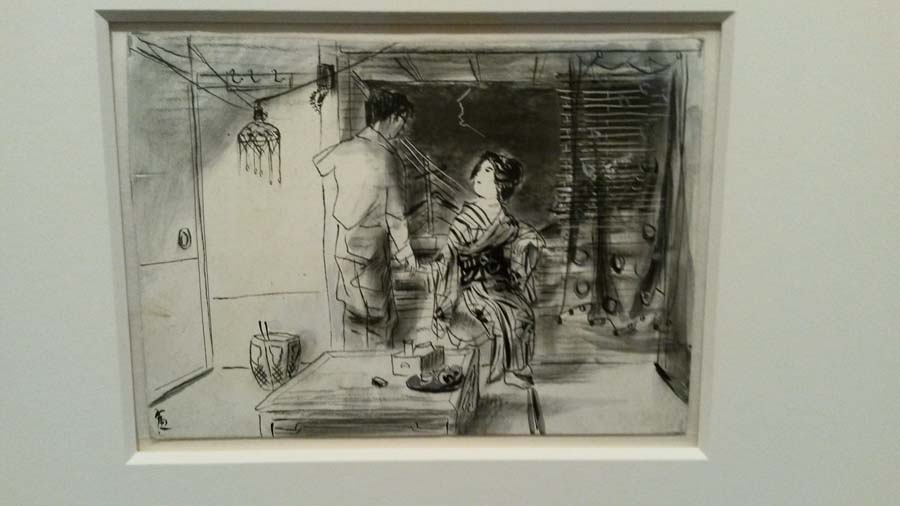
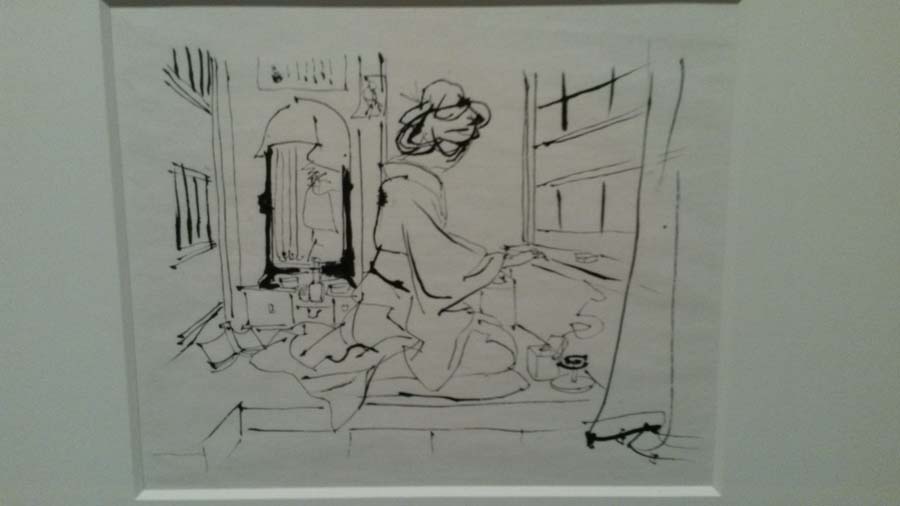
Contact me Go to home page Return to main travel page